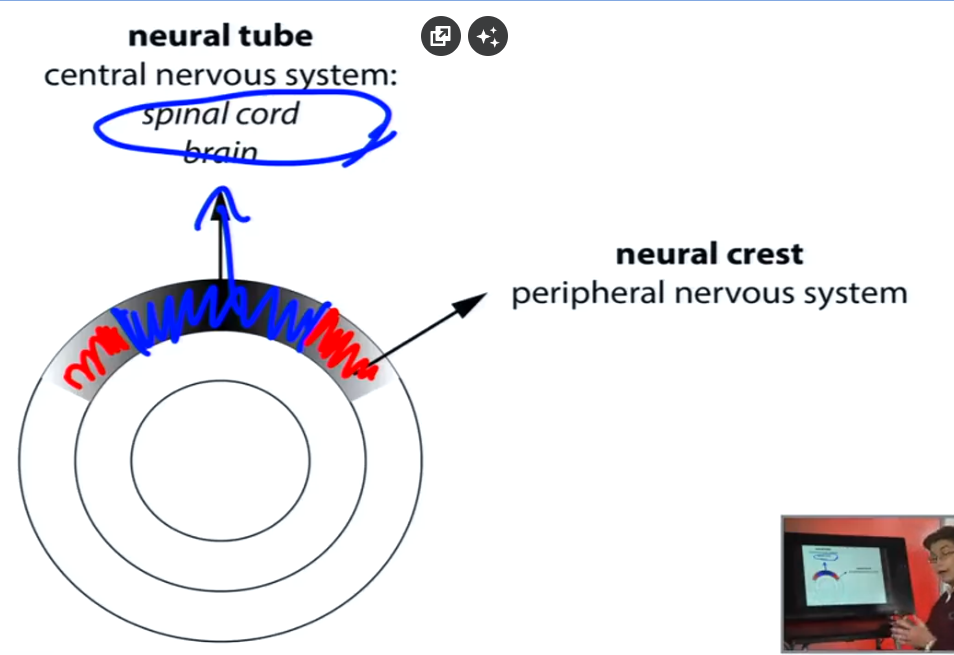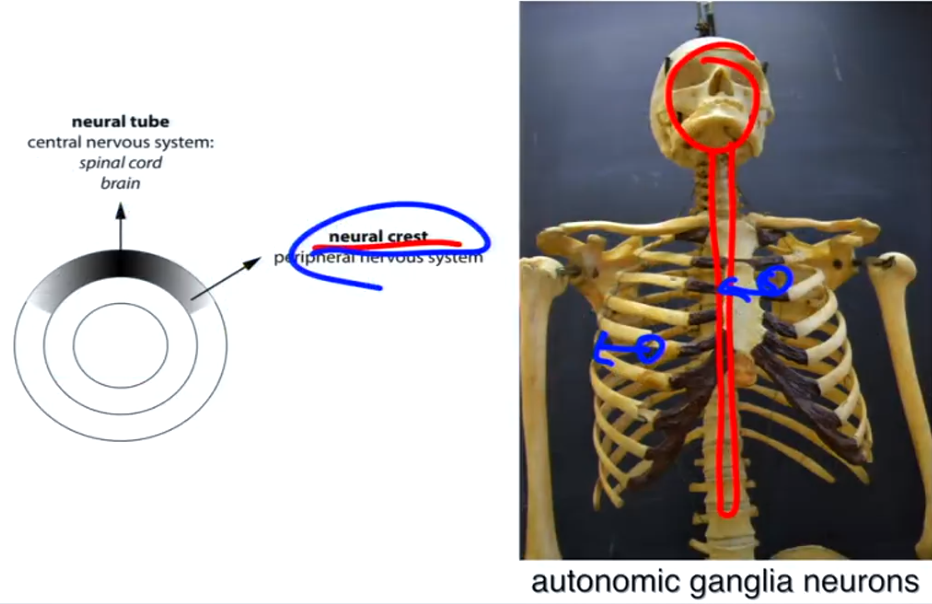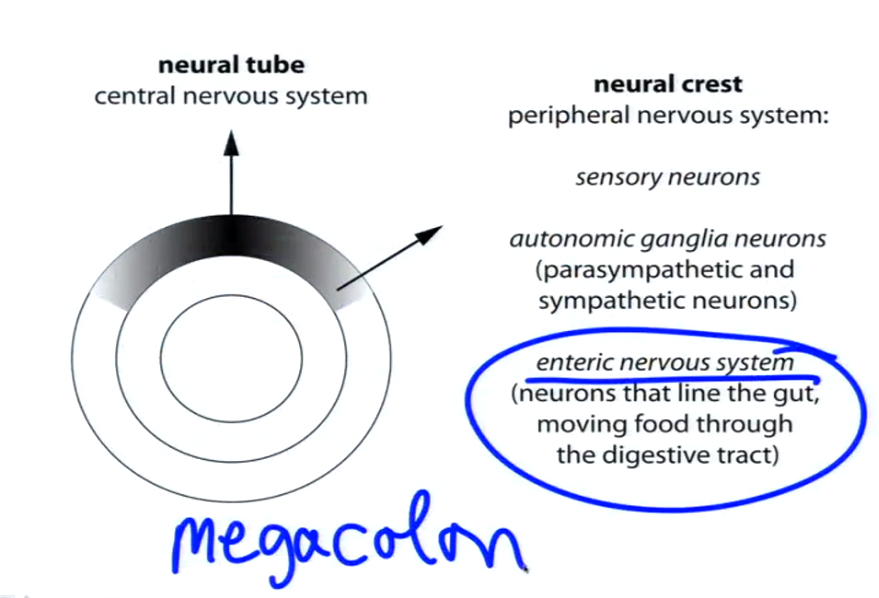Introduction

- Formation of the Central Nervous System (CNS) and Peripheral Nervous System (PNS): We will explore how the nervous system arises from a specific embryonic layer and differentiates into the CNS and PNS.
- Neural Crest and its Diverse Roles: We will delve into the neural crest, a special group of migratory cells originating from the embryo’s outer layer, and its contributions not only to the PNS but also to various other tissues.

 Key Points
Key Points
- The nervous system development begins around 15-20 days of gestation.
- Three germ layers exist at this stage: ectoderm (outer layer), mesoderm (middle layer), and endoderm (inner layer).
- The ectoderm is crucial as it gives rise to both the nervous system and the skin. This shared developmental origin explains why some disorders affect both skin and nervous system functions.
- Around 15-20 days, a specific region of the ectoderm transforms into the neuroectoderm, which will eventually form the entire nervous system.
Formation of CNS and PNS

- The neuroectoderm differentiates into two parts:
- The central portion forms the CNS, including the brain and spinal cord.
- The wing-like regions contain migratory cells called neural crest cells, which will form the PNS.
Peripheral Nervous System (PNS)
- The PNS is formed by neural crest cells that migrate throughout the body.
- The PNS consists of three main components:
- Sensory Neurons: Located peripherally, they send information into the CNS.
- Autonomic Ganglia Neurons: Innervate organs like sweat glands, hair follicles, heart, lungs, etc., controlling functions not under conscious control (sweating, heart rate).
- Enteric Nervous System: Lines the gut from esophagus to colon, responsible for the automatic movement of food through the digestive tract. Deficiencies in the enteric nervous system can lead to megacolon in newborns.
Neural Crest and its Significance

- Neural crest cells are remarkably versatile and contribute to various tissues beyond the nervous system:
- Melanocytes (pigment-containing cells) in the skin and hair.
- Cornea of the eye.
- Aorta, the largest artery in the body.
- Meninges, the protective membranes surrounding the brain.
- Neural crest plays a crucial role in the development of:
- Teeth.
- Facial bones and muscles.
- Inner ear.
Disruptions in Neural Crest Development
- Problems with neural crest development can lead to a combination of neural and non-neural issues.
- Waardenburg syndrome exemplifies this concept. It features:
- Deafness due to inner ear malformation.
- Abnormal hair pigmentation.
- Blue eyes.
- Broad bridge of the nose due to widely spaced eyes.
- Potential megacolon.
Conclusion
This lecture provided a foundation for understanding the development of the nervous system, highlighting the critical roles of the neuroectoderm and neural crest cells. The intricate interplay between these elements shapes the complex structure and function of the nervous system. Neural Tube Formation Brain Vesicles